Shangrila (Zhongdian County)

Chengdu
I fly west to Chengdu, one of the hubs for heading up the Himalayas. I meet up with Jing and we grab some Chengdu food.
One of my favorites: Corn-fried Corn. It’s sweet corn, coated in a mix of a salted duck egg and corn starch, and then fried in oil.
Crunchy, salty, and sweet. I have said this before… this would be a huge hit in the USA.

Spicy fried pork back and greens. Amazing.

Coke! And it was cold too… rare for China!

Traditional breakfast at my hotel the next morning.
Delicious pork-filled dumplings.

What we have here is (clockwise from top-right) fried rice; spicy sausages; pickled veggies; fried lotus root, grilled peanuts.
Grab with chopsticks, dip into porridge, consume.

Watery rice porridge. It serves the same purpose as a rice bowl does for any other meal.

To Yunnan
We first flew to the mountain city of Lijiang. Then took a cab ride to from the airport to the Lijiang bus station and then a 5 hour ride up the mountains to the Shangrila valley. It was nice to be on a modern bus, have some excellent weather, and not be sick for a change.

It’s a blend of cultures in Lijiang…and the food’s origins are mixed. I really couldn’t keep track.
A quick meal before catching a bus to up further in the mountains to Shangrila. I unpack my SLR so the quality of pics is a touch better from now on.
I stop in a family-run joint right next tot he bus station. I always feel guilty in these places…. it seems I always show up to eat when the family is sitting down to eat. Un-phased, they get up and within 5 minutes, whip up a meal. Then they go back to the family table and finish eating.

One of my favorites of the trip: Hash browns – Tibetan style. Julian potatoes fried in yak butter.
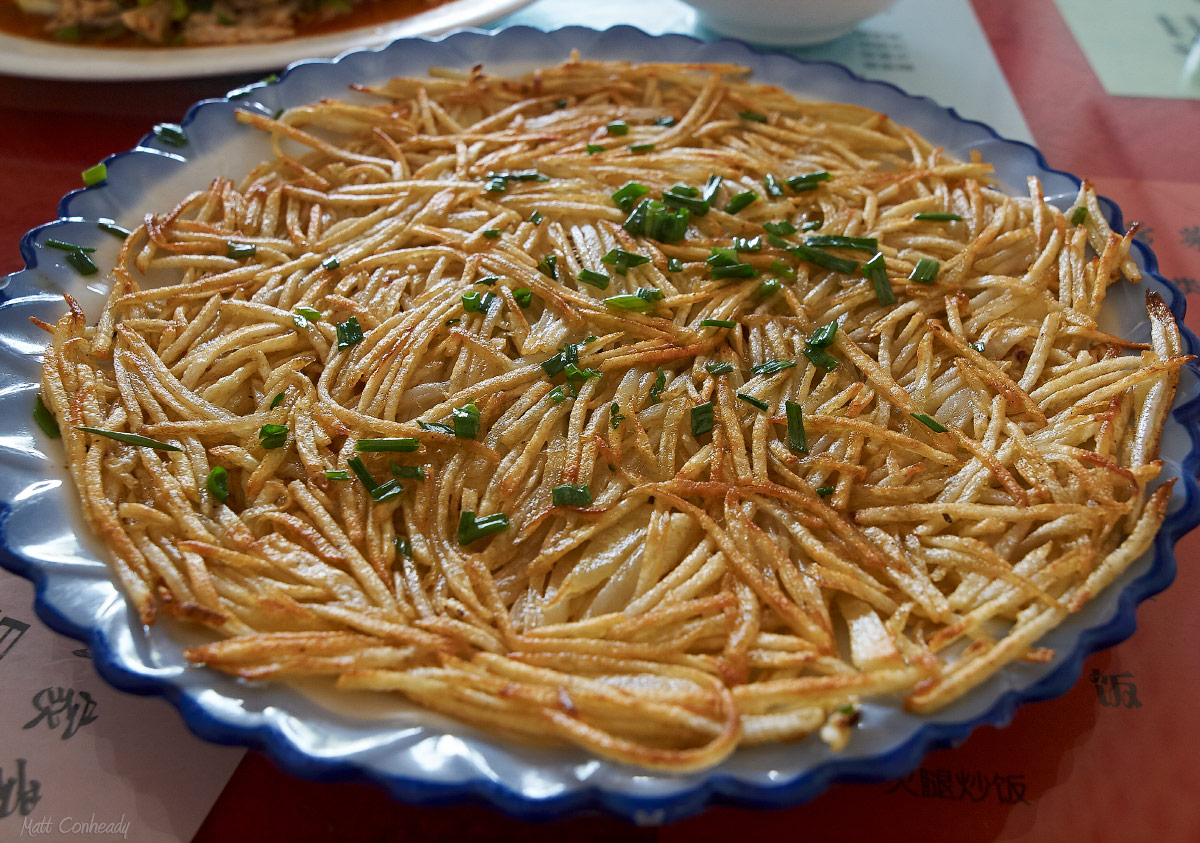
Sauteed shredded pork with green pepper

Tea with every meal.

Shangrila
Zhongdian county (中甸县) is primarily a Tibetan region located in Yunnan, in southwest China. Located in the Tibetan plateau, the elevation here is well over 11,000 ft. The air is thin, and the weather is unpredictable. Around a decade ago, this town was yaks, pigs, and poverty. A crossroads for agriculture and logging routes, it was known for its beauty, but so remote and undeveloped, that it drew little in the way of visitors. With the conservation of headwaters and unique geological eras in the valley effectively banning the logging industry, leaders had to turn to another industry to sustain the region. With Neighboring Lijiang booming from floods of tourists, officials renamed Zhongdian after James Hilton’s fictional “Shangri-La” from the novel The Lost Horizon and began planning for a tourist infrastructure. A decade later, hotels have sprung up, parks established, and shops and bars have taken hold.
The Chinese officials have their reasoning for naming the valley after the fictional paradise. It has been speculated that stunning photos of this region were published in National Geographic at the time of the book’s authoring. As well as the description of the location, as well as many features seem to be a match for the geography of the valley. Famous name or not, Shangrila, Lijiang, and Dali together make one of the most scenic and culturally-rich areas of the world.
Although the snow-capped mountains, Tibetan temples, grass prairies spotted with horses, lakes and hot springs will last an eternity, the real attraction to this remote valley, its undeveloped state, is dwindling fast. Hotels were springing up, streets becoming paved, and opportunists flooding in to open cheap souvenir markets. Everything is turning into a business now, and parks are starting to charge large fees, non-local artists are selling their wares, and restaurants are diluting the local cuisine. Now is the time to visit before the peacefulness and calm of this beautiful valley turns into a boiling mess of tourism like Lijiang.
The best time to visit Shangrila is during the summer bloom, where the grass prairie, surrounded by mountains, blooms with yellow and blue flowers. Tibetan horses and yaks will eat many of them, a great deal are used for medicines and teas, and some are even baked into pastries. I came too early for the bloom, and the tourists that flood in for it. I was also way to early for the fall change, when the dry gasses, iron-rich soil, and forest-covered trees paint he valley red. Maybe I will return for that. Right now, I was here to experience remoteness, quiet, and the culture.
I took more photos in my trip to china this year than I did in my past trips. Not every shot is a winner, but I wanted to document the experiences even if I couldn’t get a decent photo. I’m posting less than half f what I shot. Usually I’m more conservative.
The tourism industry was budding, and with no hotel chains to be found, the place was spotted with independently run boutique hotels. My hotel was a fusion of traditional colors and style with modern art and fashion. It definitely won on style, but wasn’t so great with service and comfort. Regardless, kudos to Jing for finding such a standout place.
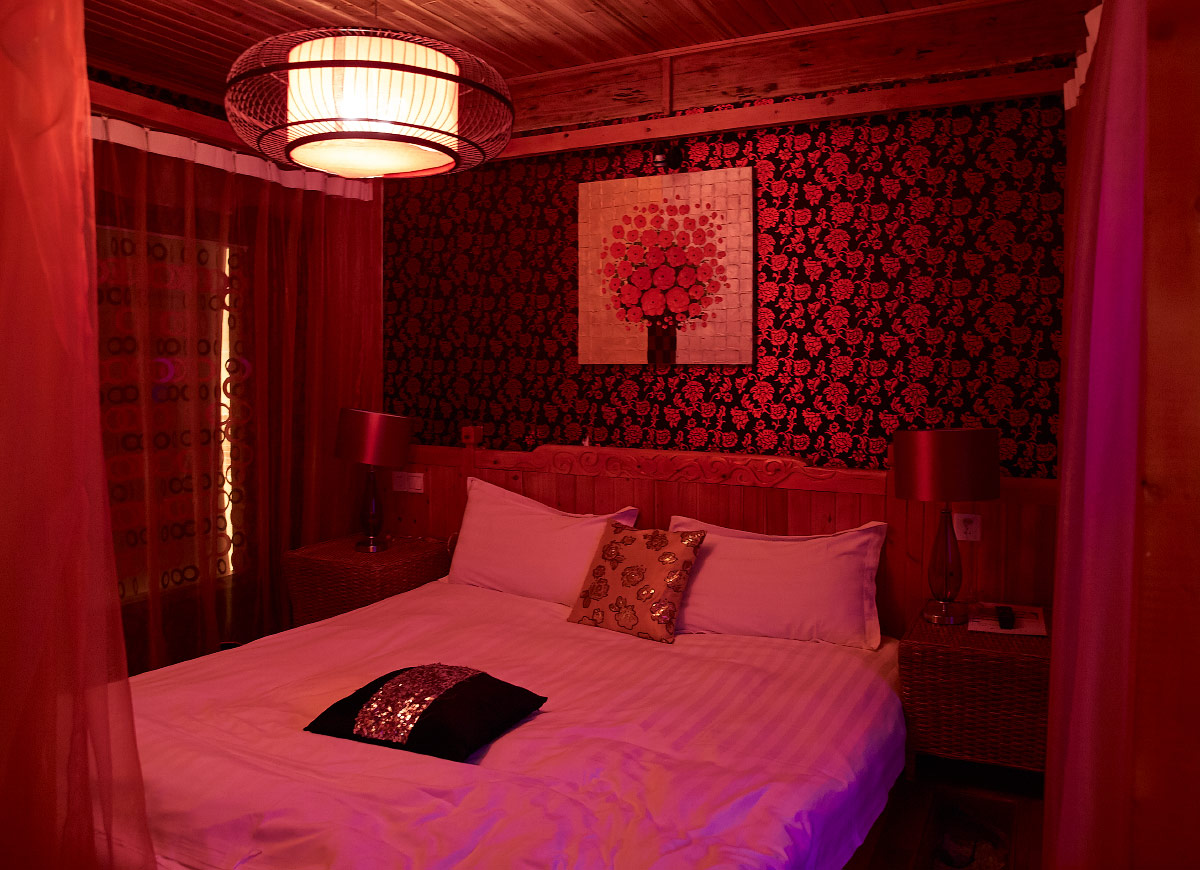

It’s starting to get late, but we are excited to see the city, and we meet up and head out.
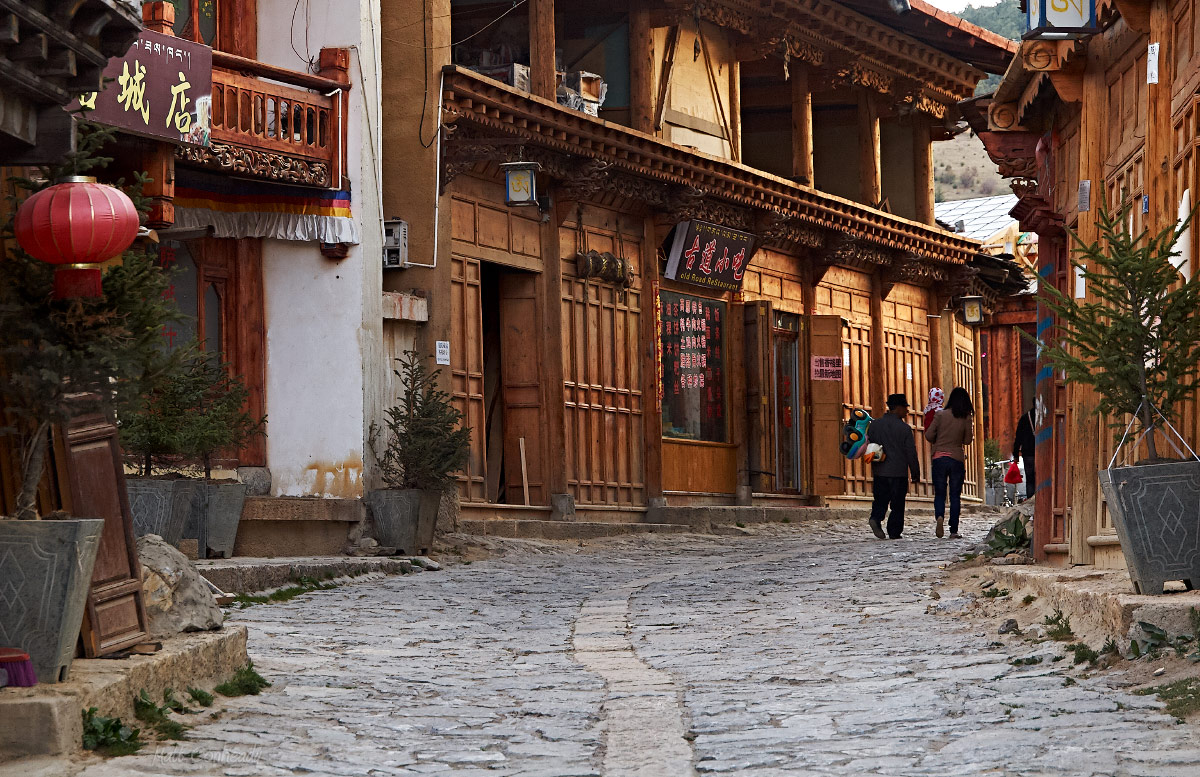
A bar outside my hotel
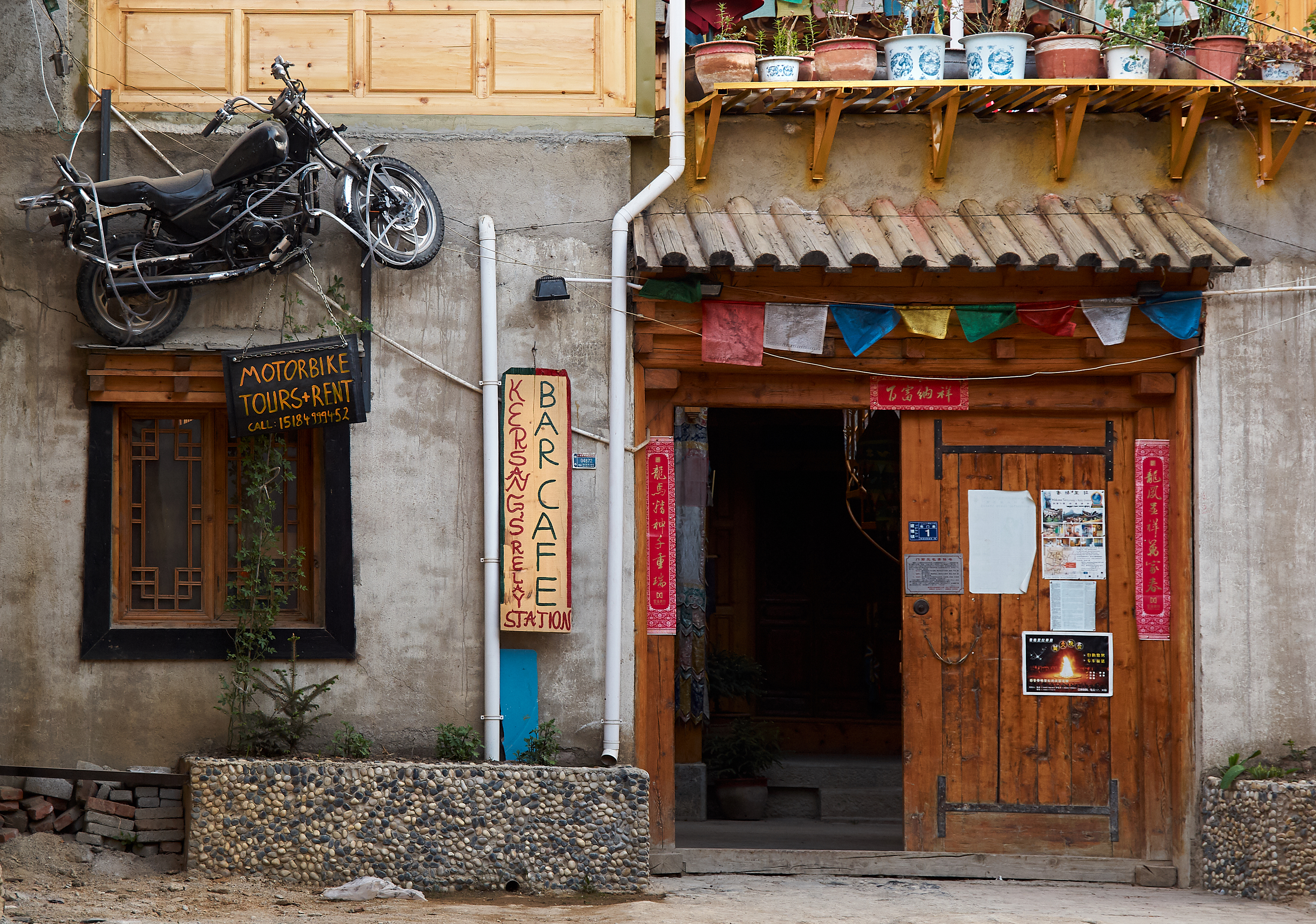
Waking down the alley from my hotel into the old town. The alleys are cobblestone, very old and polished to the point of slippery by hundreds of years of millions of shoes stepping. Autos are not generally allowed on the old town cobblestone.

Tibetan cuisine at a small restaurant near the hotel. Tibetan pop music playing in the background the service staff randomly burst out into song throughout the meal. The food is outstanding.
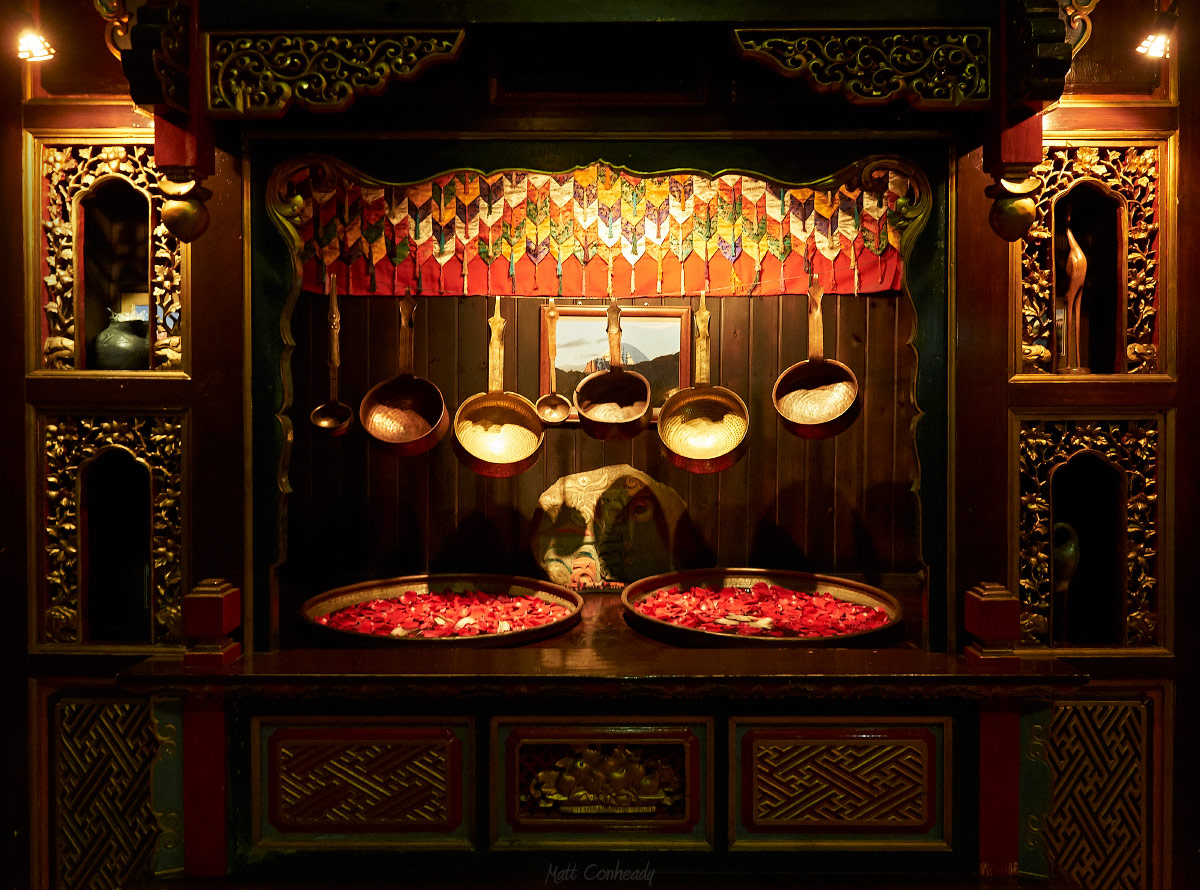

Toothpick Yak. Small strips of lean yak meat coated in a tongue-numbingly-spicy dry rub.
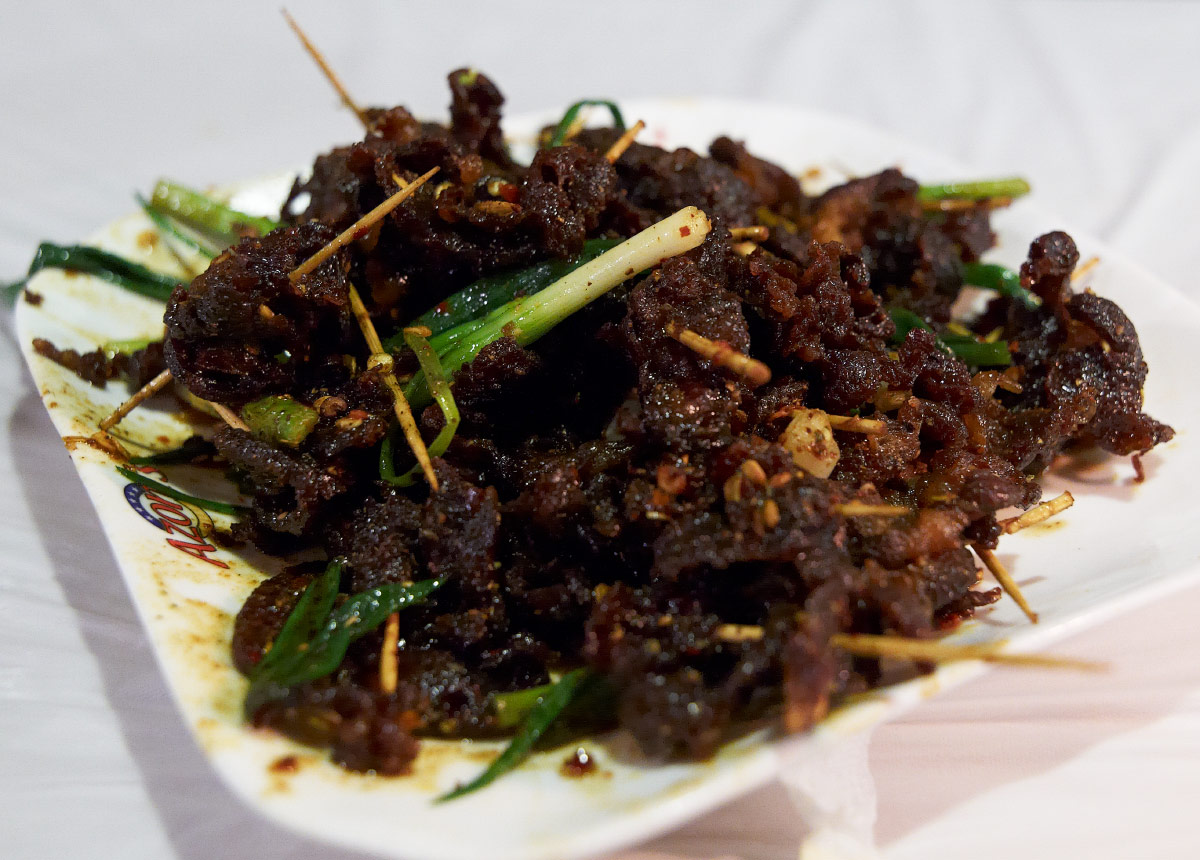
Spicy Yak meat… very spicy… very lean… it’s similar to beef.

Yak cheese balls, deep fried in yak butter, with yak yogurt for dippin’…. delicious!

The aftermath…
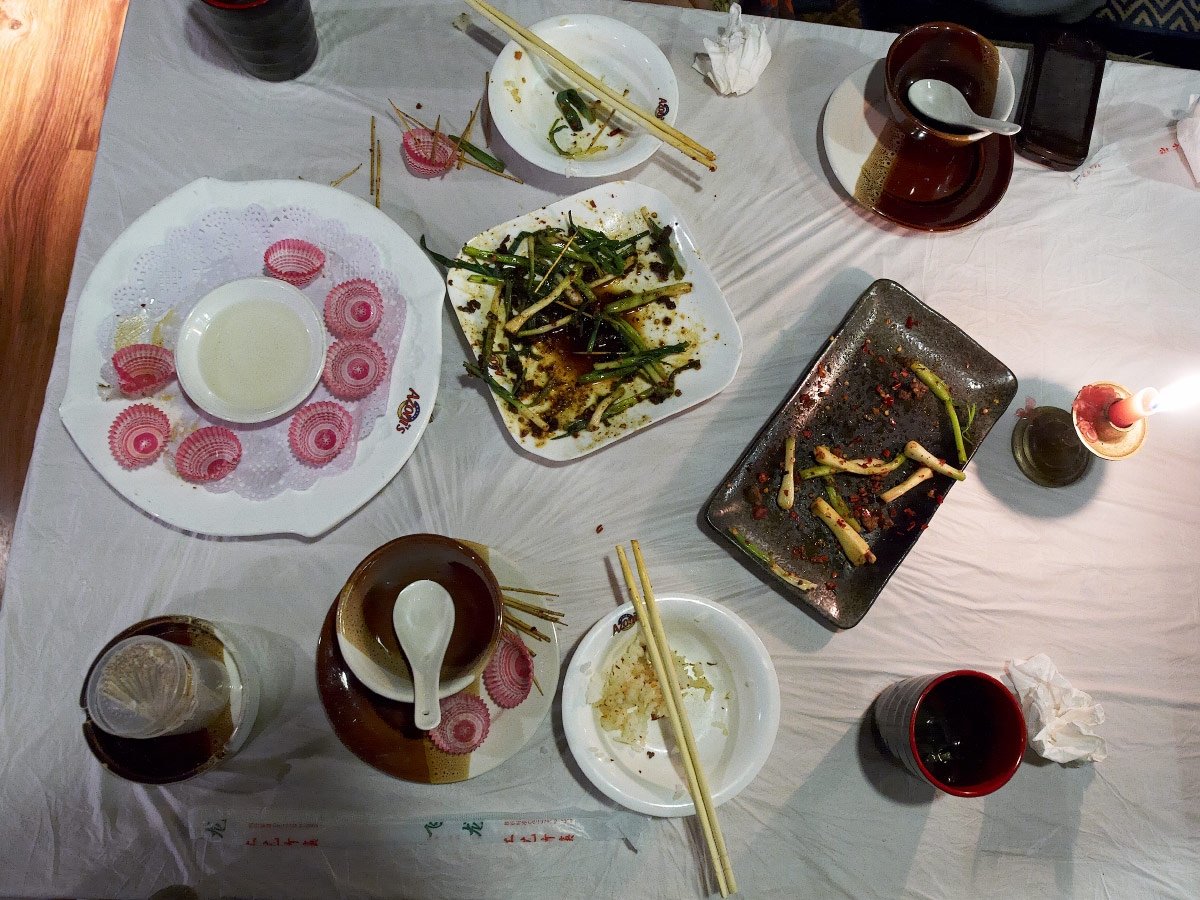
In the evening, the villagers leave their nearby shops and stalls, gather in the square, and sing and dance in a circle.
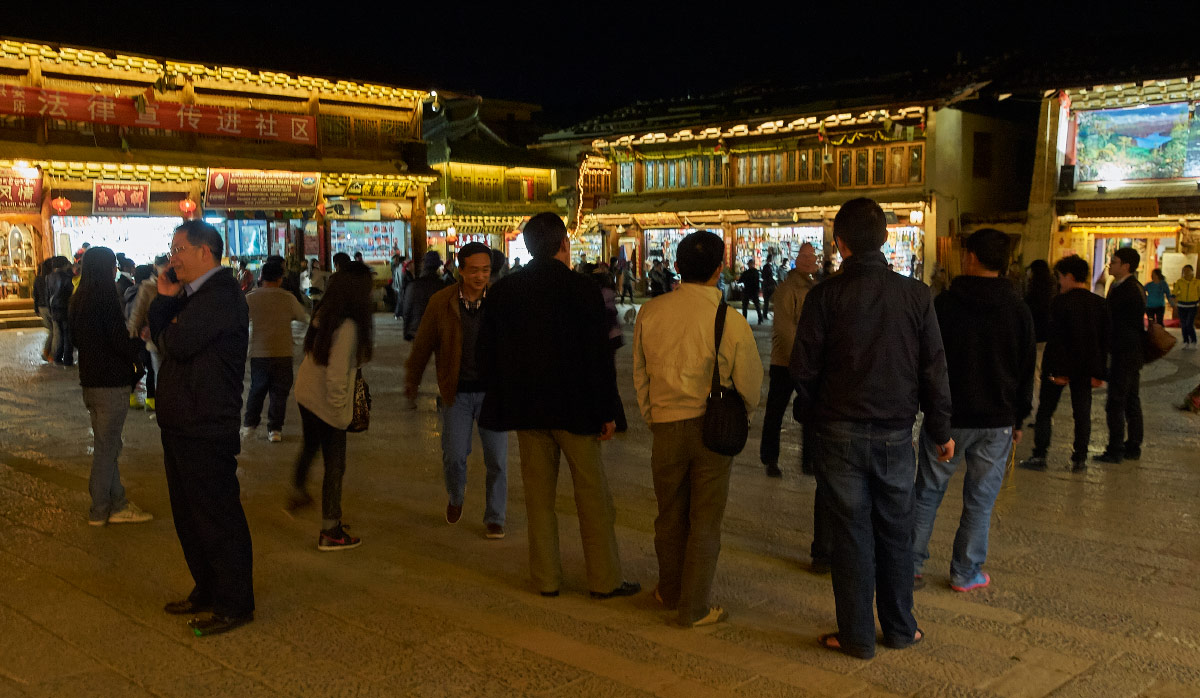
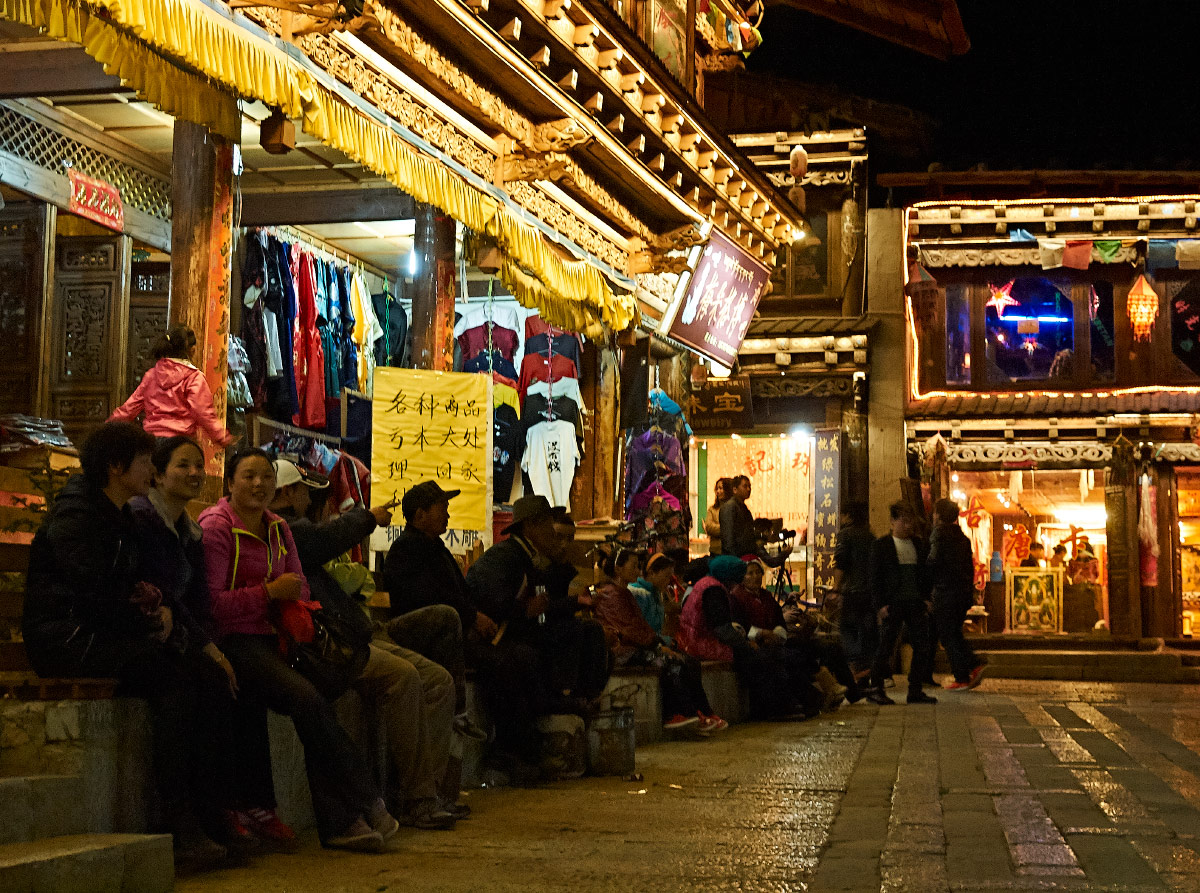
What’s noticeable about Shangrila is the darkness. Outside of the old-town center, things get dark… very dark.
The rest of China is so well lit day and night. Here, things turn pretty black at night.
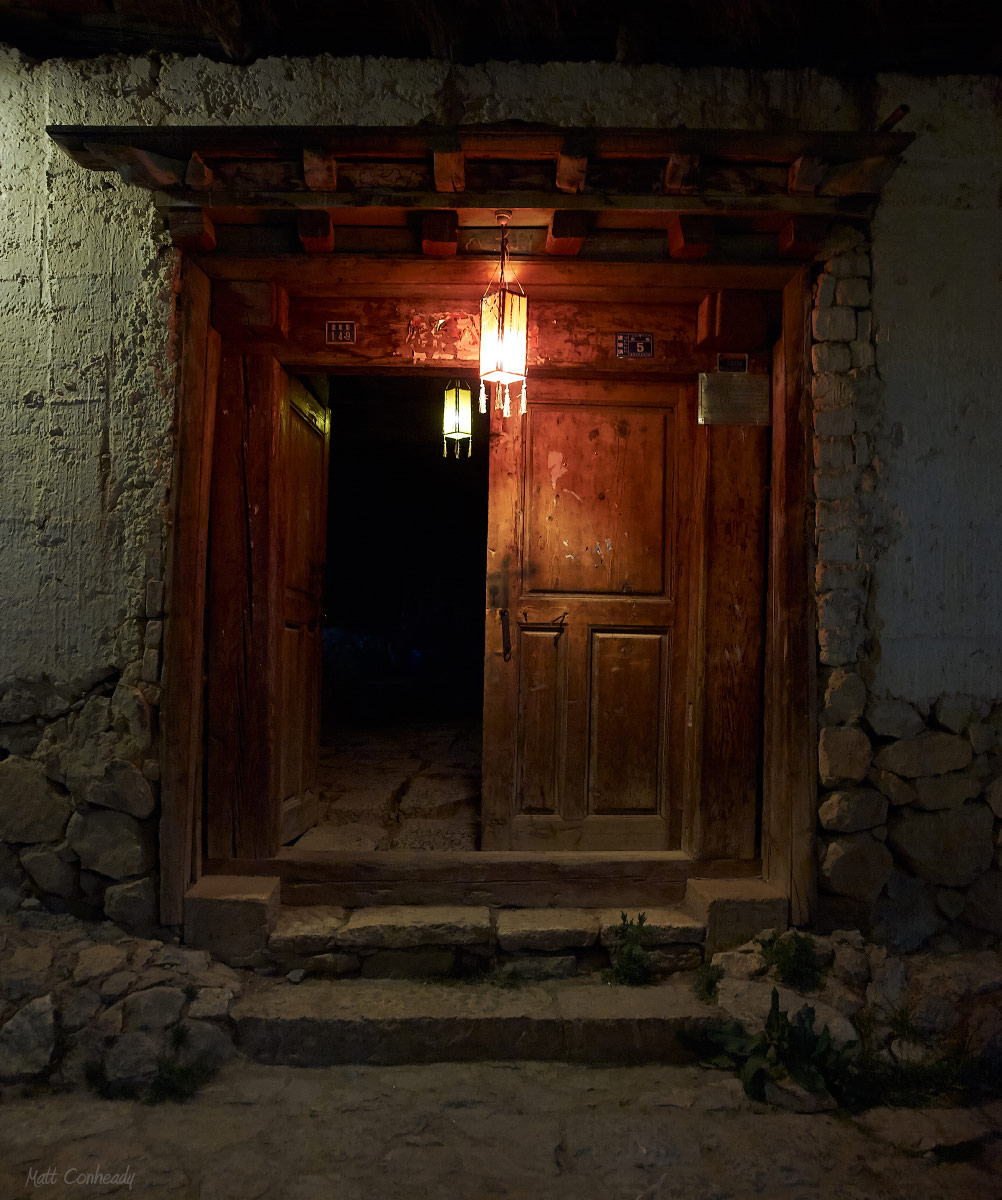

The courtyard of my hotel was beautifully lit.
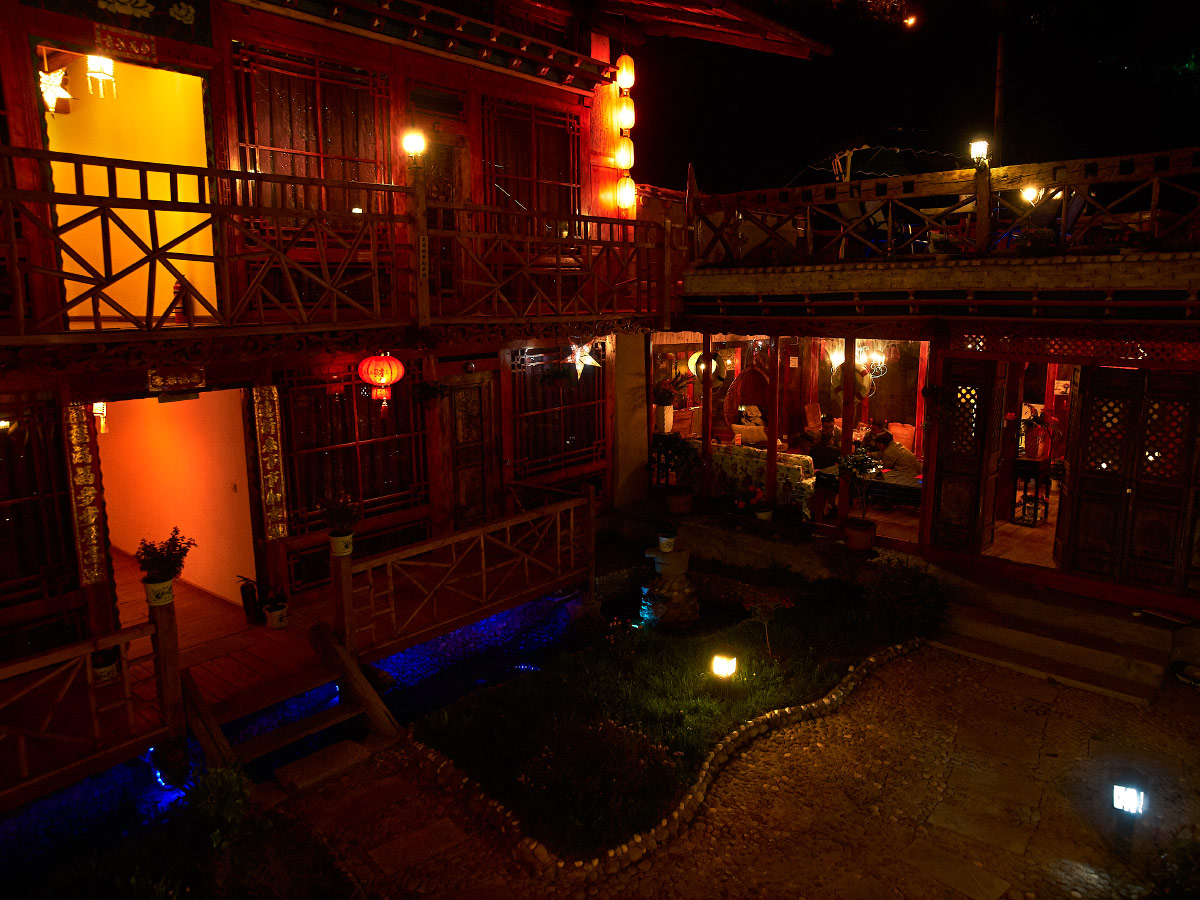

Write a Reply or Comment